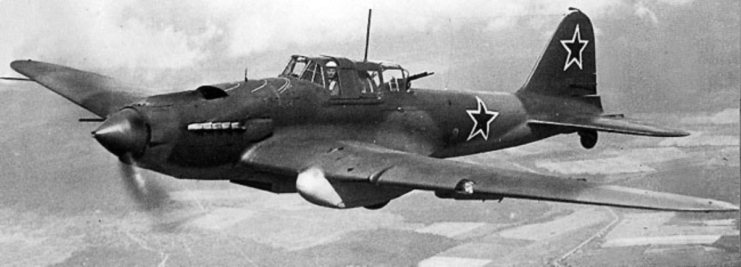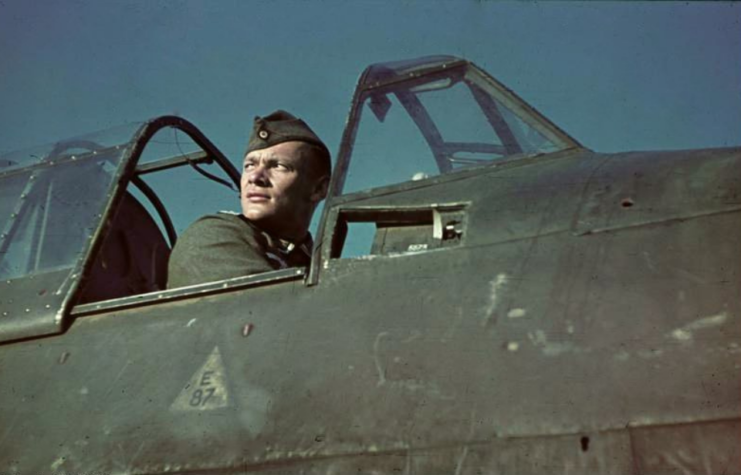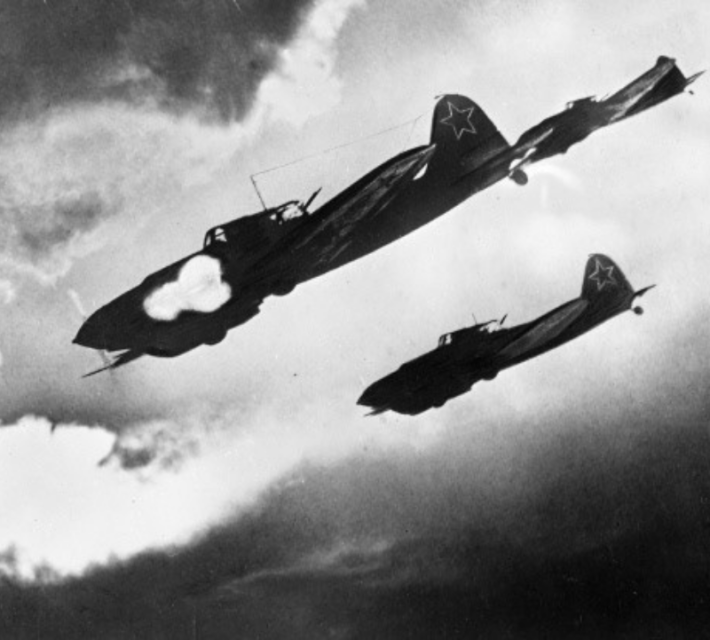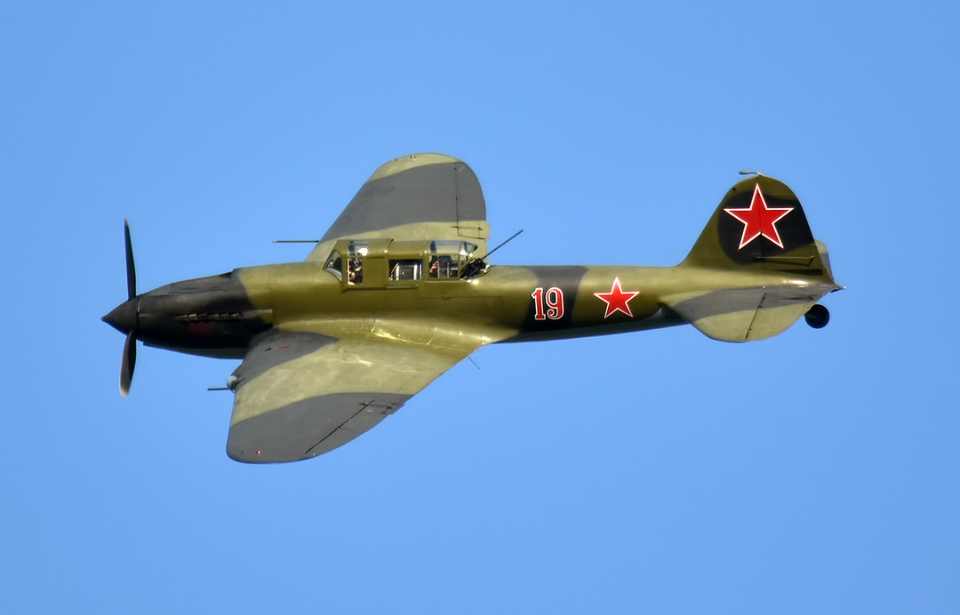By the end of WW2, the Soviet Union had mastered the art of mass-production, producing 80,000 T-34s, the second most produced tank ever, and 42,000 Il-2s, coincidentally the second most produced aircraft, and the most produced military aircraft ever.
Many parallels can be drawn between the T-34 and Il-2: both powered by a V12 engine, both armored, both can destroy tanks, both were critical to Germany’s defeat. But the focus of this article is the Il-2, an aircraft that Stalin said was “as essential to the Red Army as air and bread.”
The Ilyushin Il-2 was, at the time, the ultimate development of Soviet armored ground attack aircraft. Soviet engineers were limited by the engines available to them, which were relatively underpowered. Earlier biplanes like the TSh-1 had been tested, but their low-power engines were severely hampered by the quantities of armor needed to reliably stop bullets. Even newer aircraft would struggle to perform adequately while carrying hundreds of kilograms of armor plating.

The Il-2 started as the TsKB-55, a two-seater aircraft with a 700 kg armored shell and a 1,370 hp Mikulin AM-35 V12 engine. This aircraft competed in trials as the BSh-2, where it beat other manufacturers’ aircraft but proved to be underpowered. Engineers lightened the aircraft, removed one of the crew, and updated the engine to the Mikulin AM-38 V12, which produced 1,682 hp. It first flew in 1940 and entered production in 1941 as the Il-2.
The aircraft carried four forward-firing guns, two 23 mm cannons with 150 rounds each, and two 7.62 mm machine guns with 750 rounds each.
It is often to referred to as the “Shturmovik,” which means “ground attack aircraft,” or as the “Sturmovik” in Western sources, but it was never officially given a name, known to its pilots as simply “Ilyusha.”
The Ilyushin Il-2’s armor plating
Ground attack aircraft must be heavily armored as they operate at extremely low altitudes where anti-aircraft and small arms fire is much more accurate. Larger, more capable anti-aircraft guns like the infamous 88 mm were too slow in movement and rate of fire to hit low flying aircraft, so smaller calibers were a bigger threat to Il-2s. The Il-2 was a rather primitive aircraft, but its vital components like the engine and cockpit were protected by 5 mm to 12 mm of armor plating, greatly improving its survivability.

This was enough to protect the aircraft against calibers up to about 20 mm, but was capable of deflecting larger rounds at the right angle. To reduce the aircraft’s weight, the armored tub was actually a load-bearing part of the airframe. The Il-2 was tough against ground fire, but early single-seat models were extremely vulnerable to fighter aircraft, as they were comparatively sluggish and slow.
The Il-2 was soon modified to carry a gunner, who operated a rear-facing 12.7 mm machine gun to defend against tailing fighters. Unfortunately, the rear gunner was not protected by armor plating, causing them to suffer losses around four times greater than the pilots.
In combat
The heavy Soviet aircraft could carry a variety of weapons into combat, although it had a reduced payload compared to aircraft like the P-47 because of its heavy armor. Il-2 pilot Yurii Khukhrikov served in the aircraft on the Eastern Front and gave a first-hand account of experiences.

“An excellent aircraft for those times! Carried 600 kilograms of bombs, 8 rockets, 300 23mm shells for VIa cannon (150 per gun), and 1800 rounds for each machine gun—3,600 rounds. The gunner had a 12.7mm Berezin machine gun, 10 DAG-10 distance aviation grenades for the protection of the lower rear hemisphere,” he said.
The Il-2s had an ingenious method of surviving hits to the fuel tanks, by pumping carbon dioxide into them if they were penetrated. Khukhrikov said, “If a fuel tank was hit, that wasn’t bad either, why? When approaching the target we opened carbon dioxide canisters, which filled the empty space of fuel tanks. If a bullet pierced the body and hit a fuel tank, the sealer would fill the hole, fuel would not leak out, there would be no vapor, and consequently no combustion.”
The aircraft’s combat record is quite murky, with Soviet pilots reporting massive numbers of kills on German tanks, while German records show relatively few losses.
More from us: Bell P-39 Airacobra: WWII’s Most Controversial Low-Altitude Fighter
Despite being a ground attack aircraft that had poor air-to-air qualities, the Soviets actually used Il-2s as fighters in 1941–1942 due to shortages of available fighters. Of course, they were outmatched by dedicated German fighters like the Messerschmitt Bf 109 and the Focke-Wulf Fw 190, but against older and slower aircraft like the Junkers Ju 87 Stuka, Ju 52, and Heinkel Hs 126 they proved adequate for the role.
Its production run of over 40,000 aircraft, legendary ruggedness, and capability for destruction has made the Il-2 a mythical machine in Russia today, much like the T-34.
